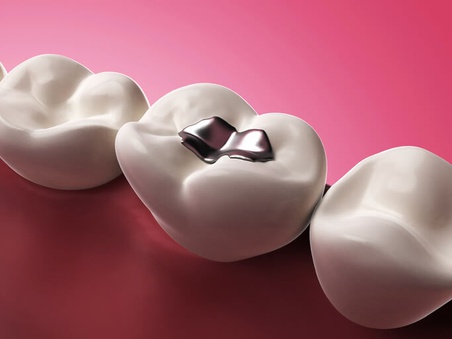When we are concerned about neural degeneration, whether it is Alzheimer's or other neurodegenerative diseases, we are always concerned with stopping the disease, which has already set in, but research would do well to worry about what triggers these many disorders, with the aim of preventing them. Indeed, the increase in the number of cases occurring over the last few decades is clear evidence that environmental factors are triggers and real.
Among the many toxic substances that can be incriminated (aluminum, lead, ...), the mercury contained in dental amalgams is one of the most dangerous. These amalgams, nowadays generally replaced by composites or ceramics, are still found in many mouths and are easily recognizable: they are the famous grey and metallic amalgams.
They contain about 50% mercury, an easy to use and inexpensive material, a significant portion of which escapes in the form of inhaled vapors, resulting in an inevitable accumulation of mercury in the central nervous system, including the brain.
But that's not all, since mercury is also released as ions, in saliva, as well as by mechanical abrasion, chemical and electrochemical corrosion, and can change into methylmercury cation, due to certain bacteria.
The worldwide distribution of Alzheimer's disease is directly related to the distribution of caries disease and the use of mercury "fillings". A striking example is Japan, which, following the trauma of mercury poisoning in Minamata in the 1950s, decided to eliminate mercury from dental amalgams. It is one of the "rich" countries with the lowest rate of Alzheimer's disease.
American studies have shown that Alzheimer's patients had on average 8 times more root caries than the control group and significantly higher concentrations of mercury in the brain and blood.
In addition, this amount of inhaled mercury can accumulate in the olfactory bulb, leading to a loss of sense of smell, which is often observed in Alzheimer's disease and is even considered an aid in the early detection of this pathology.
Exposure to low doses of mercury causes a series of disturbances in the brain that are characteristic of Alzheimer's disease. The three markers of the pathology (accumulation of beta-amyloid protein, hyperphosphorylation of Tau protein and formation of neurofibril clusters) are clearly identifiable.
It is also important to note that tin and zinc, also contained in dental amalgams, are also known to be neurotoxic. Diffusing by ionization, they reinforce the destructive effects of mercury.
It is more than urgent to address the causes of neurodegenerative diseases, rather than to focus on treatments. A change of amalgams and a heavy metal detox are necessary to stay physically and mentally healthy!
Removing and replacing fillings is not a trivial act. It must be practiced in optimal conditions to avoid further pollution. The practitioner should ensure that you do not breathe through your mouth, by providing an external source of oxygen, and use a cold water spray and vacuum to limit mercury vapors and ingestions. A good rinsing of the teeth after the removal of the material is essential, as well as the fact that the dentist must absolutely change gloves between two treatments and purify the air.





